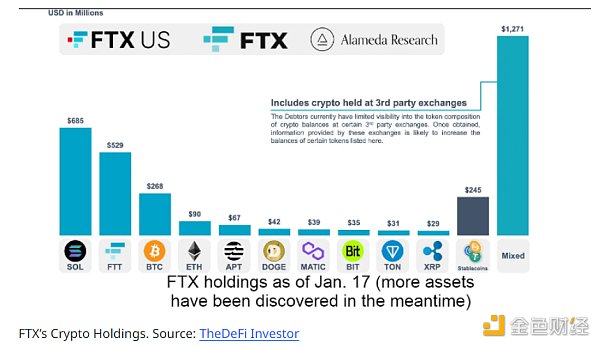How does the Fed's unlimited "print money" affect the crypto market?
On March 23, the Federal Reserve announced an unprecedented QE, including open asset purchases, which will be purchased daily
With $ 75 billion in national debt and $ 50 billion in institutional housing mortgage-backed securities (MBS), daily and regular repo rates will be reset to 0% and more.
What is unlimited QE?
Quantitative easing mainly refers to the intervention of the central bank after the implementation of the zero interest rate or near zero interest rate policy by purchasing medium and long-term bonds such as government bonds, increasing the base money supply, and injecting a large amount of liquid capital into the market to understand spending and borrowing Print banknotes indirectly.
- Slump, dips, rebounds … what are the speculators discussing on Weibo?
- Is there a future for Bitcoin? Is the fundamentals of the blockchain industry stable? Disciple Ren Zeping tells you the answer
- Ray Dalio's latest 4D Long Article: Quietly Changing World Patterns and Macro Cycles
The Fed has not set an upper limit on the scale of asset purchases, which is equivalent to an open quantitative easing policy.
After the unlimited QE, how does the market react?
1. Various types of assets: On the 23rd, the safe-haven assets such as gold continued to fall. On the 24th, the Dow retaliated and rebounded by 2100 points, the largest single-day increase in 1987. US stocks rose instantly, and then all closed down.
2. US dollar index: Since the U.S. stock market crashed, the US dollar index rose from below 95 to more than 103, indicating that the assets of various countries have been held in the hands of the US dollar, which has caused a liquidity crisis in the US dollar. After the unlimited QE, the US dollar index has fallen sharply, but it is still above 100, which indicates that the liquidity crisis in the United States has eased slightly than before.
3. Crypto market: Bitcoin rose by more than 10% in two hours, from 5800 yuan to 6600 US dollars.
Impact on the crypto market
Different from the 2008 financial crisis, everyone fled to safe havens, but this time the epidemic overlapped with the bursting of the U.S. stock market bubble and panic in market sentiment. Even the safe haven assets were abandoned and flowed to cash. There is no doubt that the epidemic has been linked to the global economy. Closely related, especially the US epidemic has not shown a turning point, the market will not resume normal production and consumption in the short term, and the public's panic has not subsided.
The unlimited QE promulgated by the Federal Reserve can only try its best to ensure liquidity and the normal operation of financial markets to prevent the worst-case scenario.
The impact of the epidemic on the market can be divided into the following stages:
1. During the outbreak, the number of infected people increased sharply, production (especially the real economy) stagnated, the public was extremely panic about the future economic situation, consumption investment was reduced, and various assets were "sold indiscriminately" and converted into cash and held by the public. , The market appears tight liquidity.
2. In the turbulent period, the people's panic has not ended. Although various economic stimulus policies issued by various countries can temporarily stimulate the economic rebound, the inflection point of the epidemic has not appeared, production and life cannot return to normal, and the symptoms are not cured.
3. During the recovery period, the epidemic situation was basically controlled, the panic of the people weakened, production and life gradually recovered, and the market gradually improved.
The current situation in the United States is in the first period. After the Fed's unlimited quantitative easing, gold, U.S. stocks, and bitcoin all rose, but there was only a little ripple.
At present, the U.S. epidemic is in a period of rising risk, and the market's risk aversion is also in a rising period. The Fed's big move of unlimited quantitative easing policy can be said to be a fist on cotton and its effectiveness is greatly reduced. The main sticking point is still The market's pessimistic expectations and loss of confidence in monetary policy are being lost.
As for the crypto market, domestic production and life are gradually recovering, but the overseas epidemic situation has not improved. The global market risk aversion has been affected by the epidemic situation, and the crypto market cannot escape the influence of the overall market sentiment. Although it is obviously better than 3.12, it has to return. At the moment of high light, it will take time for the epidemic situation to settle down, coupled with various "water release" policies of various countries, funds will increasingly flow to the crypto market. I believe that the crypto market will continue to sing along. (Disclaimer: This article comes from the community)
We will continue to update Blocking; if you have any questions or suggestions, please contact us!
Was this article helpful?
93 out of 132 found this helpful
Related articles
- Comparison of overseas blockchain epidemic prevention with China: limited use cases, lack of government presence
- Popular science | Is distributed, decentralized, multi-centralized the same thing?
- Linked US stocks fell again, BTC pullback sentiment strengthened
- Understand the difference between token financing and equity financing
- Analysis: Ethereum, the largest "air coin" in the industry?
- Digital Dollar Foundation: America Needs Real "Digital Dollars"
- Will the USDT market cap exceed Bitcoin? Stablecoin has become a strategic highland of blockchain





